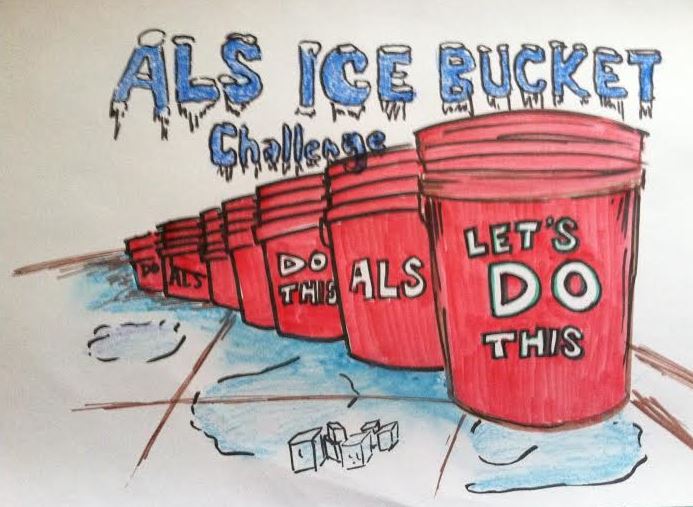If you scrolled through Facebook, Twitter, YouTube, or any other social media site during the summer, it was surely filled with videos of people dumping water on themselves and then telling others to do the same. This fad would have sounded strange before this summer, but the ALS Ice Bucket Challenge has become one of the most popular social media movements of the year.
Amyotrophic Lateral Sclerosis, more commonly known as Lou Gehrig’s Disease or ALS, is a debilitating neurodegenerative disease in which motor neurons in the brain and the spine gradually stop functioning. This affects the voluntary muscle action of the body, as the motor neurons can no longer send impulses to the muscles, and patients may eventually become paralyzed. No cause, treatment, or cure for ALS has been discovered.
Participants in the ALS Ice Bucket Challenge first either pour ice water on themselves to spread awareness of ALS or donate to the organization. Then, they nominate others to do the same. If nominees do not complete the challenge within 24 hours, they must donate to the organization.
This challenge became popular at the end of June 2014 and quickly spread through the social media world. Even celebrities have raised awareness for this disease by taking part in the challenge and donating. These celebrities include Taylor Swift, Benedict Cumberbatch, Macklemore, LeBron James, Tyler Posey, Colton Haynes, George W. Bush, Bill Clinton, and many more.
David Holmes ‘15 lauds the challenge, saying, “The Ice Bucket Challenge was a great way to raise awareness for ALS. It got many people thinking about it and donating to charities to find a cure. ALS has become much more mainstream in society because of the Ice Bucket Challenge Campaign.” As a result of this challenge’s popularity, the ALS Association has raised over $100 million dollars.
Like any other social media trend, the ALS Ice Bucket Challenge comes with criticism. Many people only do the challenge to be a part of the fad. Kate Rose ‘16 muses, “I don’t think it’s as good as everybody says it is. Kids dump water on themselves and don’t donate, which doesn’t really help the cause.” Others sometimes fail to even mention ALS in their challenge videos, ignoring the actual purpose of participating in the challenge itself.
Overall, this challenge has raised awareness for ALS and the ALS Association, allowing people to understand the detrimental disease. As Psychology teacher Ms. Rieder comments, “Although the momentum initially created by the Ice Bucket Challenge was unsustainable, I appreciated how it was able to capture the attention of such a large and diverse audience and bring awareness to a condition few truly understand. I think it provided an opportunity for millions of people to learn about the disease as well as donate toward research for a cure.” Diligent studies funded by the ALS Ice Bucket Challenge have been successful in revealing scientific understanding that is crucial to curing ALS in the future.

